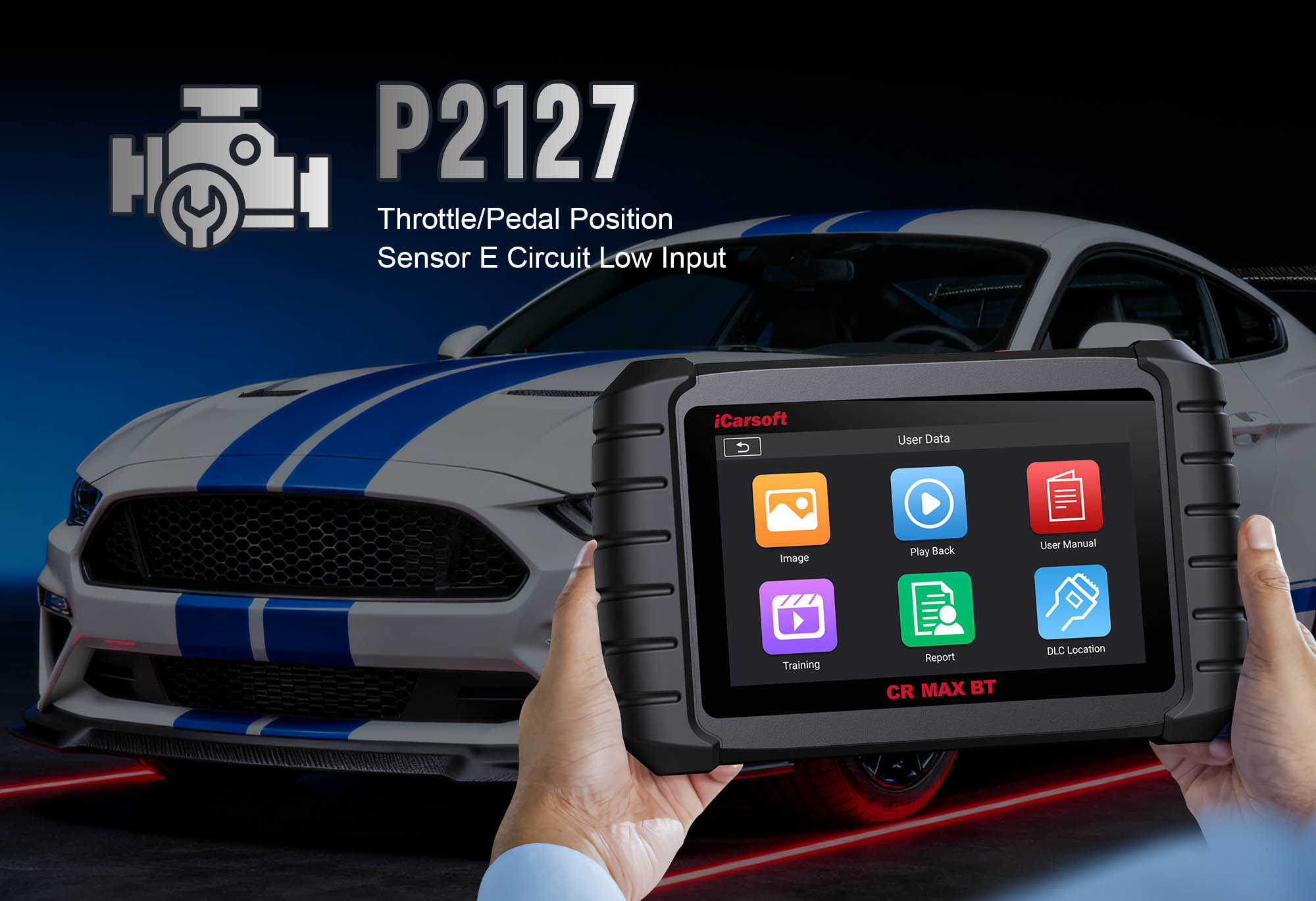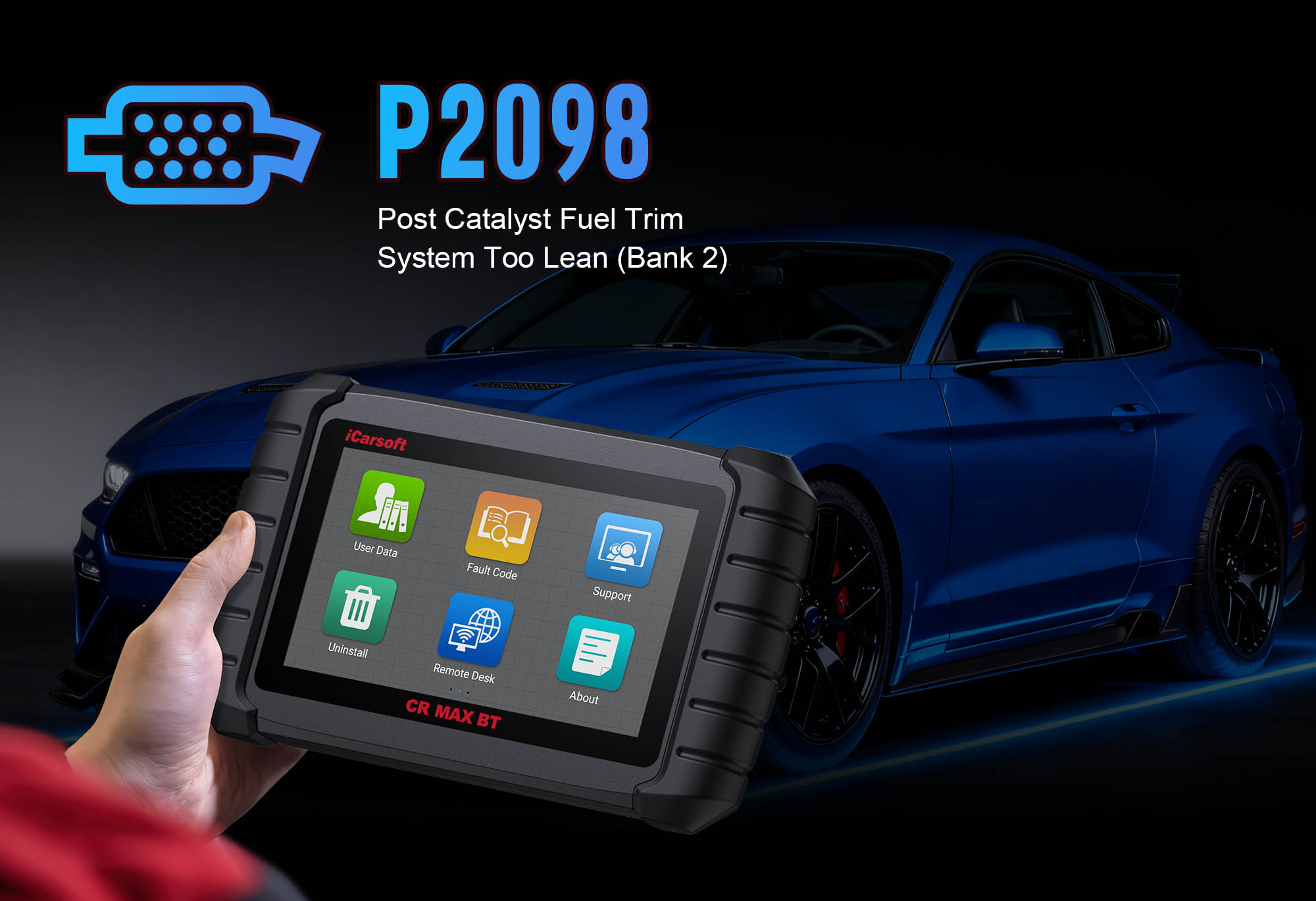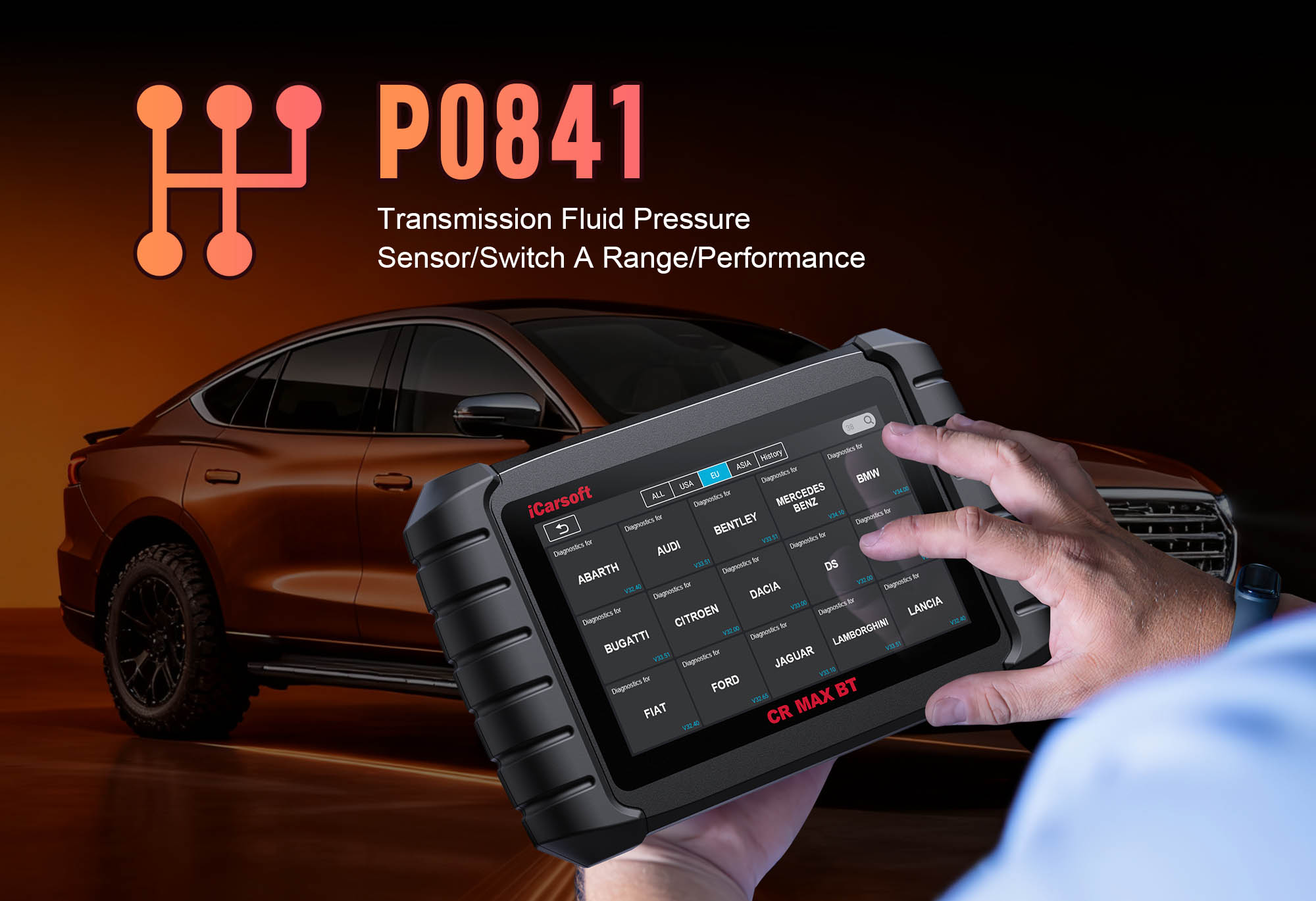Diagnose & Clear P0326 with iCarsoft CR MAX BT: Fix Knock Sensor 1 Circuit Range/Performance (Bank 1)
Diagnose & Clear P0326 with iCarsoft CR MAX BT
If your vehicle’s check engine light stays on, you notice reduced power during acceleration, or it produces unusual "pinging" noises from the engine, a diagnostic scan will likely return P0326. This OBD-II code stands for "Knock Sensor 1 Circuit Range/Performance (Bank 1)"—a fault targeting the primary knock sensor (KS1) on cylinder bank 1.
The knock sensor detects abnormal combustion (engine knock/detonation) and sends voltage signals to the Engine Control Module (ECM). When these signals fall outside the manufacturer’s normal range (typically 0.5V–4.0V) or behave erratically, the ECM can’t adjust ignition timing to prevent damage. This leads to inefficient fuel use, performance loss, and long-term engine wear. Basic scanners only flag a "knock sensor issue," but the iCarsoft CR MAX BT with specialized diagnostics solves this. Let’s break down how to resolve P0326 step by step.
Understanding P0326: Causes & Key Symptoms
The knock sensor (KS1, Bank 1) is a piezoelectric or magnetic sensor mounted on the engine block or cylinder head. It converts vibration from engine knock into electrical voltage: low voltage (0.5V–1.0V) during normal operation, and moderate spikes (1.0V–4.0V) when knock occurs. P0326 triggers when the ECM detects signals that are too weak, too strong, or inconsistent—indicating the sensor can’t reliably communicate knock data.
Key Symptoms of P0326
-
Check Engine Light (CEL): A steady CEL illuminates, and some vehicles display "Engine Knock System Fault" or "Ignition Timing Malfunction" warnings.
-
Engine Knock/Pinging: Unmetallic, rattling noises during acceleration (especially under load, like towing or climbing hills) as the ECM fails to adjust timing.
-
Reduced Acceleration: The ECM retards ignition timing excessively to avoid damage, leading to sluggish power delivery and hesitation.
-
Poor Fuel Economy: Incorrect timing disrupts combustion efficiency, dropping mileage by 10–20%.
-
Limp Mode Activation: Modern vehicles may limit speed (to 40–50 mph) to protect the engine from unregulated knock.
Common Causes of P0326
|
Cause
|
Description
|
|
Faulty Knock Sensor 1 (Bank 1)
|
Internal piezoelectric element wear or magnetic coil failure (common after 80,000–120,000 miles) causes erratic or out-of-range signals.
|
|
Damaged Sensor Wiring
|
Frayed wires, rodent chew marks, or corrosion in power/ground/signal lines create resistance or shorts, distorting voltage.
|
|
Loose/Corroded Connector
|
The sensor’s 2–3 pin connector (on the engine block) is loose, rusted, or contaminated with oil—disrupting signal flow.
|
|
Engine Oil Leaks
|
Oil seeping into the sensor or its connector damages internal components, leading to inconsistent voltage output.
|
|
Sensor Misalignment/Damage
|
The sensor is loose (from loose bolts) or cracked (from debris), preventing accurate vibration detection.
|
|
ECM Malfunction
|
Rarely, the ECM’s internal signal processing circuit fails—misinterpreting normal data as "out of range."
|
Why iCarsoft CR MAX BT Excels at Diagnosing P0326
The CR MAX BT outperforms basic tools with features tailored to knock sensor range/performance diagnostics—critical for resolving P0326 accurately:
Wireless Bluetooth Connectivity
Test hard-to-reach Knock Sensor 1 (engine block areas) from 30 feet away—no cords hinder access or risk contact with hot components.
Live Voltage & Vibration Tracking
Monitors real-time voltage (0.5V–4.0V) and vibration spikes, instantly flagging out-of-range values or unresponsive behavior.
Knock Sensor Response Test
Simulates engine vibration to verify sensor voltage adjustment—distinguishes faulty sensors from wiring issues.
AutoVIN Identify
Automatically detects vehicle make, model, and knock sensor specs (voltage range, pinouts) in seconds—no manual lookup.
Circuit Integrity Checks
Identifies resistance, shorts, or open circuits in wiring—pinpoints frayed wires or corroded grounds without guesswork.
Step-by-Step: Diagnose P0326 with iCarsoft CR MAX BT
-
Safety First & Initial Visual Inspection
1. Cool the engine: Let the vehicle sit 1–2 hours after driving to avoid burns.
2. Locate the sensor: Use Component Location > Engine > Ignition System > Knock Sensor 1 (Bank 1)—Bank 1 has cylinder #1.
3. Inspect for oil leaks: Check sensor/connector for oil buildup; clean with degreaser and resolve leaks first.
4. Verify mounting: Ensure sensor is tight (15–20 ft-lbs torque); loose sensors cause erratic signals.
5. Check connector: Disconnect, inspect for corrosion/bent pins; clean with contact cleaner and apply dielectric grease.
6. Inspect wiring: Follow harness to ECM—check for frays, chew marks, or heat damage; repair with heat-shrink.
-
Connect the Tool & Confirm P0326
Plug CR MAX BT into OBD-II port, power on, select AutoVIN Identify to retrieve specs. Navigate to Engine > Fault Codes > Read Codes to confirm P0326. Tap Code Details for vehicle-specific insights (e.g., "Toyota: KS1 Expected 0.5–4.0V, Actual 0.2V") and check related codes (P0325, P0327).
-
Monitor Live Knock Sensor Data
1. Start engine, idle 5 minutes to stabilize.
2. Navigate to Engine > Live Data > Knock Sensor > Bank 1, Sensor 1—monitor two metrics:
- Voltage: Should read ~0.5–1.0V at idle; <0.3V or >4.5V confirms P0326.
- Signal consistency: Accelerate to 2,000 RPM—smooth spikes (1.0–3.0V) = normal; erratic jumps = fault.
3. Load test: Drive up a hill—listen for knock; no voltage spike = unresponsive sensor.
-
Test Knock Sensor Circuit Integrity
Turn off engine, disconnect sensor connector:
1. Power wire test: Set multimeter to "DC Voltage"—touch power pin + ground. Ignition "ON" = 5V; 0V = blown fuse/broken wire.
2. Ground wire test: Set to "Ohms"—touch ground pin + chassis. Normal = <1 ohm; >5 ohms = poor ground.
3. Signal wire test: Check continuity between signal pin and ECM—no continuity = broken wire.
4. Resistance test: Magnetic sensors = 1,000–10,000 ohms; piezoelectric sensors = 0.1–0.5V when tapped.
-
Test the Sensor & Resolve Mechanical Issues
1. Bench test the sensor:
- Remove sensor (follow torque specs to avoid stripping bolts).
- Piezoelectric: Tap tip with plastic mallet—voltage should spike; no spike = faulty.
- Magnetic: Move magnet near tip—resistance should fluctuate; no change = faulty.
2. Fix oil leaks: Replace leaking gaskets/seals; clean mounting area with degreaser.
3. Inspect for damage: Replace cracked/dented sensors—debris buildup disrupts detection.
-
Repair & Clear P0326
- Oil leaks/loose sensor: Replace gaskets; retighten sensor to specs.
- Wiring/connector: Repair frays with heat-shrink; clean oil-contaminated connectors.
- Faulty sensor: Replace with OEM-equivalent (use Part Lookup—e.g., Bosch 0261231149); torque to specs.
- ECM malfunction: Consult dealer for reprogramming (last resort—confirm with ECM Communication Test).
Clear code: Go to Engine > Fault Codes > Clear Codes and confirm P0326 is deleted.
-
Validate the Repair
1. Monitor post-repair data: Confirm 0.5–1.0V at idle and smooth spikes (1.0–4.0V) with mild knock.
2. Test drive 30–40 minutes: Include light acceleration (no pinging), heavy load (hill climbing), and highway driving.
3. Run I/M Readiness Test: Via OBDII Functions to verify emissions compliance.
4. Save report: Use History & Report to document fault, repairs, and post-repair data.
Preventing P0326 Recurrence
-
Regular Sensor Checks: Use Service Reminder to test Knock Sensor 1 every 50,000 miles—catch early wear.
-
Oil System Maintenance: Follow Maintenance Schedule for oil changes (5,000–7,500 miles) and inspect gaskets for leaks.
-
Wiring Protection: Inspect harness every 15,000 miles for rodent damage; use heat-resistant loom near hot parts.
-
Lifetime Free Updates: Use One-Key Upgrade (Wi-Fi) to add new knock sensor diagnostic features.
Conclusion
P0326’s knock sensor range/performance fault risks long-term engine damage from unregulated knock. The iCarsoft CR MAX BT simplifies diagnosis with wireless convenience, live tracking, and response tests—ensuring you fix the root cause (sensor, wiring, or oil leak) instead of guessing.
With global vehicle coverage, 40+ service functions, and lifetime updates, the CR MAX BT is a long-term investment in protecting your engine’s combustion system. Restore smooth acceleration, eliminate knock, and drive with confidence—all with one professional-grade tool.





